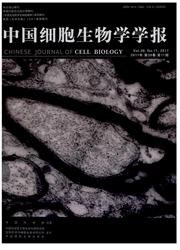

 中文摘要:
中文摘要:
利用谷氨酸转运体抑制剂制备选择性运动神经元损伤的脊髓片培养模型,在此基础上探讨Ⅱ相酶诱导剂5,6-二氢环戊烯并1,2-二硫杂环戊烯-3-硫酮(CPDT)对运动神经元的保护作用及机制。乳大鼠脊髓片分为正常对照组、THA模型组(100μmol/L苏-羟天冬氨酸;THA)和Ⅱ相酶诱导剂CPDT干预组(15和30μmol/L)。通过免疫组化方法对脊髓腹角α运动神经元进行计数,并利用RT-PCR丰定量方法、免疫印迹及酶活性检测等方法,分析各组间醌氧化还原酶1(NQO1)和铁蛋白重链的表达。结果表明CPDT(15或30μmol/L)干预组脊髓腹角的运动神经元数明显增多,与THA模型组相比差异显著(P〈0.05,P〈0.01),并且经CPDT干预可以有效的诱导NQ01以及铁蛋白重链的表达增加,为下一步在肌萎缩侧索硬4E(ALS))动物模型或ALS病人中进行临床干预打下了前期基础。
 英文摘要:
英文摘要:
On the basis of the model of selective motor neuron injury which induced by inhibitor of glutamate transporter, to investigate the neuroprotection effect and mechanism of phase II enzyme inducer 5,6- dihydrocyclopenta[C]-1, 2-dithiole-3-thione (CPDT). Organotypic spinal cord slices of rat pup were divided into normal control group, THA model group (THA 100 μmol/L) and phase Ⅱ enzyme inducer CPDT (15, 30 μmol/L) treatment groups. Ventral α motor neurons' survival of spinal cord slices in each group was evaluated by immunohistochemical staining. The expression of NQO1 and ferritin in each group was evaluated by the method of RT-PCR, Western blot and assay of enzyme activity et al.. Compared with THA model group, the number of α motor neurons significantly increased with intervention of CPDT (15 μmol/L or 30 μmol/L). And the expression of antioxidant enzyme of NQO 1 and heavy chain of ferritin increased significantly in CPDT treatment group. The result provided fundamental conditions for intervention on animal model of amyotrophic lateral sclerosis (ALS) and ALS patients.
 同期刊论文项目
同期刊论文项目
 同项目期刊论文
同项目期刊论文
 期刊信息
期刊信息
